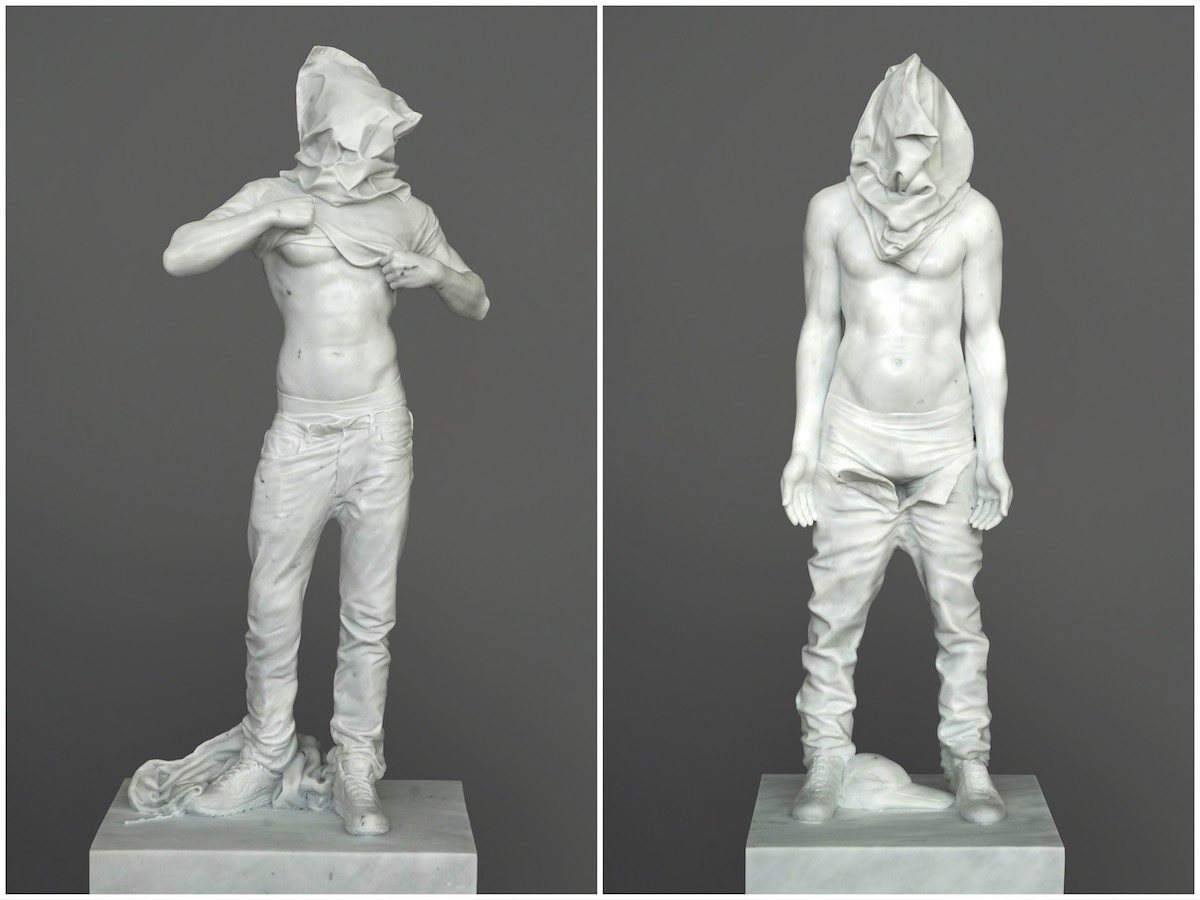LONDON: An impressive array of Middle Eastern art has been displayed at one of the world’s most influential contemporary art fairs.
Frieze London was held in Regent’s Park from Oct. 12 to 16. Here, Arab News highlights some of the finest exhibitors from the region, and their work.
Ahmed Mater
Mater, a Saudi artist, debuted his new work “Ashab Al-Lal,” a large-scale installation commissioned for Wadi AlFann in AlUla.
A prototype was exhibited at ATHR’s booth, a Jeddah gallery. It is made of Waterjet Rosa Asiago marble and a stainless steel mirror for its interior surface. It was also accompanied by multimedia drawings detailing the vision.
The doctor-turned-artist uses a subterranean tunnel, archival slides and mirrors to create the optical illusion of a mirage within the desert terrain.
Charting the development of Saudi Arabia from its founding in 1932 through the oil boom of the 1960s and 1970s, Mater’s work reflects on these changes on the individual, the community, society and the world.
As visitors travel back in time, the story of the desert’s past serves as a guide on how we want to imagine our future.
Sarah Abu Abdallah

Another work on display at ATHR’s booth is “Fortitude” (2020), by Saudi artist Abu Abdallah.
The tomato resin sculptures contain real heirloom tomato seed from her hometown of Qatif in the Eastern Province. This native crop, grown by generations of farmers, has gone nearly extinct as a result of urbanization.
“The idea is to preserve nature as part of one’s identity and culture,” Abu Abdallah said.
Alluring the eye with its clever combination of synthetic and organic materials, the piece also draws viewers attention to our part in ecological turmoil.
Ayman Yosri Daydban

Daydban, a Palestinian artist based in Jeddah, brought a piece of his homeland, literally and metaphorically, to Frieze with his work “Soil” (2015) at ATHR’s booth.
The soil, which has been shaped into a circle on silicon paper, comes from his hometown of Kafer Malek in Ramallah.
He says the work focuses on the Palestinian national narrative, considering the meaning and significance of a handful of earth.
The soil was brought to him by pilgrims through his cousin in Palestine, “a paradise that echoes in me whenever I’m unable to visit it,” Daydban said.
Thus, the work symbolizes his inseparable connection to his homeland, in spite of his physical distance to it.
Rania Stephan

A solo exhibition, “In My Mind’s Eye,” by Lebanese artist Stephan was shown at the booth of Beirut-based Marfa’ Gallery.
The multimedia works were inspired by her fascination with space travel. Neil Armstrong’s moon landing was the first image she saw on a television set.
Stephan’s exhibition draws heavily on science fiction. In her hand-painted television set “Lift Off” (2022), Stephan uses a video loop from Fritz Lang’s 1929 “Woman in Moon” to contextualize the lack of women among space exploration.
The artist considers sci-fi to be an “inspiring lens through which to comprehend our present.”
Reza Aramesh

Four sculptures by Aramesh, an Iranian, stood out in particular at the exhibition from Tehran-based Dastan Gallery. They are part of his ongoing “Site of the Fall: Study of the Renaissance Garden” series, which focuses on the media portrayal of violence.
Following extensive research on reports of war and conflict, the artist extracted images of figures and poses and recreated them into human sculptures made of Carrara white marble.
In contrast to the heavy presence of noblemen and mythological figures in Renaissance statues, Aramesh often depicts the working class, people of color, and vulnerable men from the Middle East, Asia, and Africa.
Carved from stone, his sculptures are meant to glorify the strength and resilience of the everyday man.
Jumana Manna

“Old Bread (Fence)” (2021) by Manna, a Berlin-based Palestinian artist, was on display at London’s Hollybush Gardens booth.
On a low metal platform sit ceramic bread bits, mostly taboon and Jerusalem ka’ek, which mimic the Palestinian custom of leaving leftover bread outside for anyone to take.
The gesture is connected to cultural and religious traditions that frown upon the discarding of food.
Manna’s work also references food insecurity in Palestine under political conditions of occupation.
It is one of the most powerful works at Frieze, capturing the social, sacred and emotional connotations of these bread scraps and their rotted texture evokes the guilt we feel when food goes to waste.

